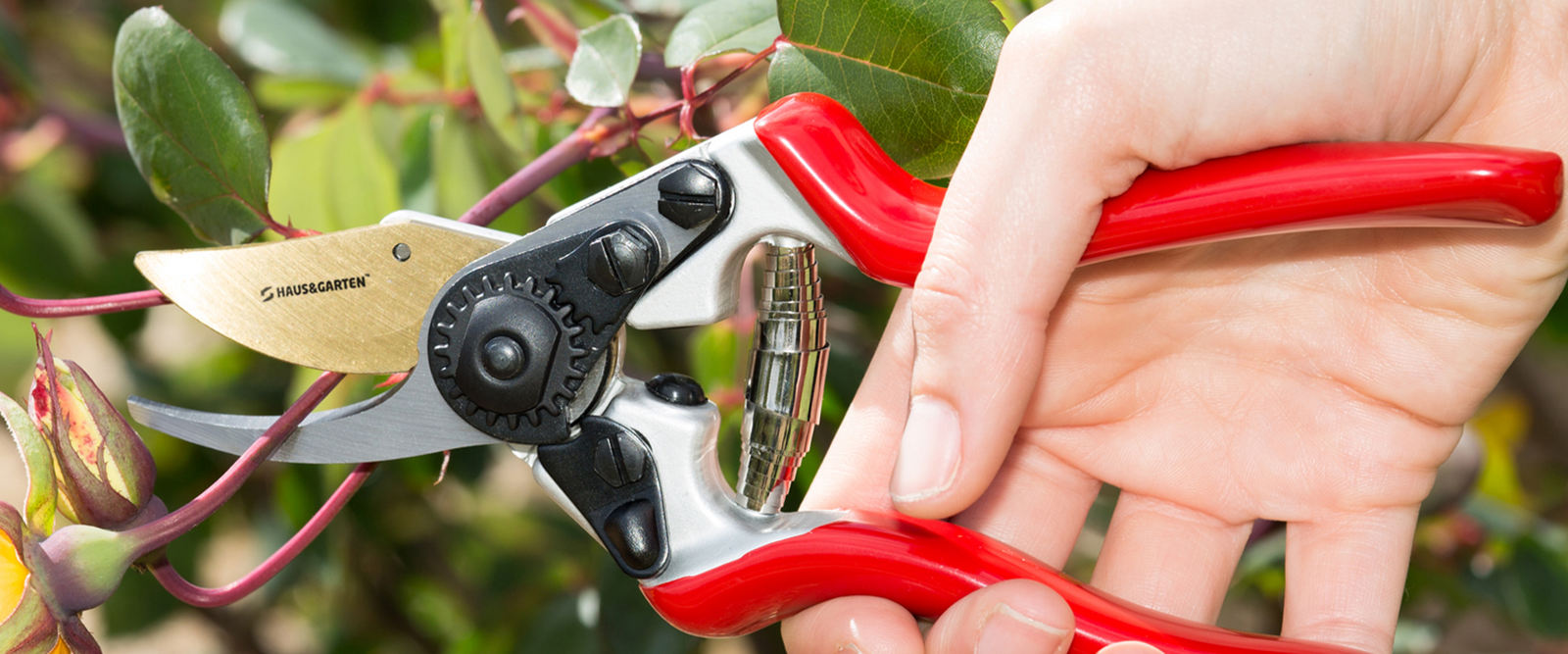1. Get Ready
Before you head out to your garden, prepare your tools. There are different pruning shears for different jobs. Bypass pruners cut live wood, while anvil pruners handle dead stems. Most gardeners use bypass pruners because they make clean cuts on green wood. Before you begin pruning, make sure to sharpen, clean, and disinfect your shears.
2. Unlock your pruner
Make sure your pruners are unlocked. Usually, there's a thumb-lock to keep them closed when not in use.
To unlock, squeeze the handles tightly together and turn the thumb lock in a slight counter-clockwise direction, releasing the handles afterwards. In rare cases, the thumb lock may be too tight to turn so you can try to loosen the screw slightly to allow it to move as desired.

3. Hold the handles properly
Hold your pruners properly. Holding your pruners with just your fingertips can tire your hands so make sure to grip the handles using the base of your hand and fingers.
Pruning involves repetitive hand movements so look for pruners that fit your hand and are comfy, especially for long pruning sessions. For example, our EnduroPRO garden shears are made to accommodate medium to large hands for both men and women, feature non-slip ergonomic handles, and have a vertically-inclined angled cutting head that reduces hand fatigue.

4. Find the perfect cutting spot
To get the most precise cut, place the blade exactly on your desired cut location. You’ll often need to use the tool “upside down” or hold it in a different way to prevent the anvil from touching the stub that will be left on the plant. This way of cutting will leave minimal damage to the plant, which should be your goal when pruning.

5. Cut at the correct angle
For dead wood, cut straight through the branch. But for live wood, cut at a 45-degree angle just above a bud. This helps water drain off and prevents diseases. Cutting this way also helps divert sap away from the bud.
6. Cut carefully
While holding the handles comfortably, completely open your pruners, and place the branches deep into the blade. With the wood all the way in the blade, squeeze the handles to close the blades and cut through the branch in one swift motion. You may want to snip through wood like you’re cutting with scissors but this method may strain your hands, dull the pruner blade, and damage the plant.

7. Clean your pruners
When pruning different plants, make sure to clean your pruners in between cuts to prevent the transmission of disease from one plant to another.
Knowing how to clean your pruning shears is also necessary to keep them well-maintained and free from bacteria which can harm your plants. Use warm, soapy water to wipe them and remove sticky stuff like sap.
8. Sharpen and oil before storing
Before you store your pruner, consider using a sharpening tool to keep the blade maintained. In addition to sharpening, use a mineral oil or multipurpose lubrication oil such as 3-in-1 or WD40 to wipe down the joints and the blade to prevent rust.
Pruning can be tricky, but learning how to use your pruning shears properly will make it easier. Master these basics, and your gardening will be less complicated.




